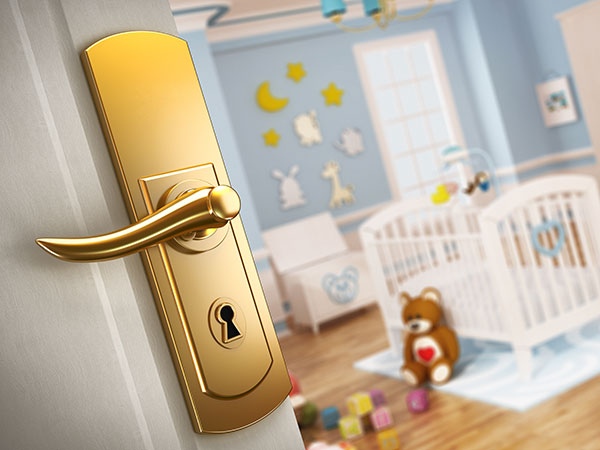5 ways to creating a safe nursery for your baby
How to create a safe nursery for your new arrival
At a glance
- The ideal temperature for your baby’s nursery is between 16 degrees C and 20 degrees C.
- Fix low windows so that they don't open more than 12.5cm (5in)
- Ask an electrician to check that sockets are made to BS 1363:1995
Designing your baby's nursery is such an exciting part of planning for your new arrival but do make sure you take time between colour schemes and cute designs to make sure you have all the safety aspects covered.
Here's a simple guide to follow to ensure your little one's nursery is as safe as possible.
1. Check windows, doors and any blinds are safe and secure
It may seem a long way off, but your little one will become mobile before you know it, so rather than wait, fit door slam stoppers to your baby's nursery door from the word go, to make sure little fingers stay safe. You can get different types of stoppers, some fit the latch side and some the hinge side, so be sure you know which side to attach it.
If your baby's nursery has sash windows, fit them with locks to prevent your child from opening them from the bottom. You can fix low windows so that they don't open more than 12.5cm (5in). All furniture that could be climbed on (you may be surprised what little ones can manage to climb on) ensure is placed away windows so the temptation to climb up and look out is not an option.
When you start looking at curtains and blinds for the nursery, choose options without cords. If you do have cords on the curtains or blinds, make sure they are securely tied up high up and way out of your child's reach.
2. Keep your nursery at the right temperature
The ideal temperature for your baby's nursery is between 16 degrees C and 20 degrees C. It's important not to let your baby's room get too cold or too hot. A basic room thermometer is one way to alert you to the temperature in the room, but maintaining the right temperature may not always be easy.

3. Check sockets and wiring in the room
Modern plug sockets are designed with inbuilt safety features to protect your baby. It's not advised to use socket covers on these as it can actually make them less effective. If you're not sure how old your sockets are, you could ask an electrician to check that they are made to BS 1363:1995.
As with anywhere in the house, do take the time to make sure the outer covering of power leads is not frayed or damaged and replace if necessary. Cables and leads will need to be positioned out of your little one's reach and away from any sources of heat. It's worth thinking about the layout of the room early and check that you have sockets where you will need them so you won't have to use extension leads.
4. Choosing and positioning the cot
When choosing your cot, you will probably be thinking about matching it your nursery design and that size wise it fits your room, but do also check it conform to BS EN 716-2:2008. This standard ensures that the cot is deep enough to be safe for your baby. And do also ensure you have a new mattress even if your cot is second hand and that it fits snugly for your chosen cot with no gaps.
Thinking about where to position your cot is hugely important as it needs to be away from windows, radiators, lamps, heaters and wall decorations and cords. Furniture that in away could be climbed upon should be kept away from the cot too.
5. Make sure furniture is arranged safely
When choosing your nursery furniture, ensure it is stable and won't topple over in your baby's nursery. If you are concerned that any furniture you have in the nursery isn't entirely stable, such as chests of drawers or wardrobes, it is worth securing them to the walls. A simple bracket should be enough do the job.